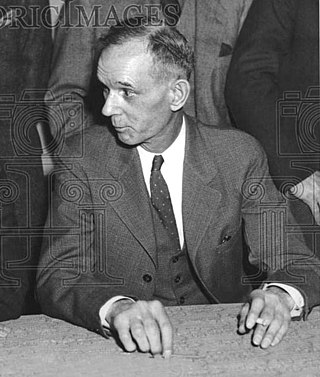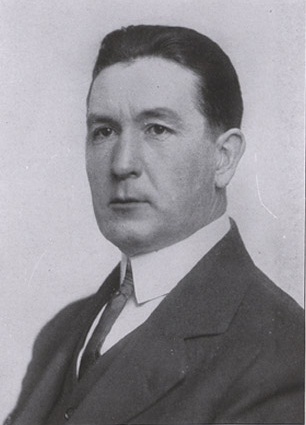Related Research Articles

Robert Gilmour Dobie was an American college football player and coach. Over a period of 33 years, he served as the head football coach at North Dakota Agricultural College (1906–1907), the University of Washington (1908–1916), the United States Naval Academy (1917–1919), Cornell University (1920–1935), and Boston College (1936–1938), compiling a career college football head coaching record of 182–45–15 (.783).
The 1916 Oregon Webfoots football team represented the University of Oregon in the 1916 college football season. It was the Webfoots' 24th overall and first season as a member of the Pacific Coast Conference (PCC). The team was led by head coach Hugo Bezdek, in his fourth year, and played their home games at Kincaid Field in Eugene and at Multnomah Field in Portland.
The 1919 Oregon Webfoots football team represented the University of Oregon in the 1919 college football season. It was the Webfoots' 27th overall and fourth season as a member of the Pacific Coast Conference (PCC). Home games were played at Kincaid Field and Hayward Field in Eugene, and at Multnomah Field in Portland.
The 1915 Washington football team represented the University of Washington as a member of the Northwest Conference during the 1915 college football season. In its eighth season under coach Gil Dobie, the team compiled an overall record of 7–0 record, shut out five of seven opponents, and outscored opponents by a combined total of 274 to 14. Washington had a mark of 1–0 in conference play, and were co-champions of the Northwest Conference alongside Washington State. Ray Hunt was the team captain.
The 1916 Washington football team was an American football team that represented the University of Washington during the 1916 college football season. In its ninth season under coach Gil Dobie, the team compiled a 6–0–1 record, was champion of the new Pacific Coast Conference, and outscored its opponents by a combined total of 189 to 16. Louis Seagraves was the team captain.
The 1917 Washington football team was an American football team that represented the University of Washington as a member of the Northwest Conference and the Pacific Coast Conference (PCC) during the 1917 college football season. In its first season under coach Claude J. Hunt, the team compiled an overall record of 1–2–1 and was outscored by its opponents by a combined total of 47 to 14. Washington had a record of 1–1–1 in Northwest Conference play, placing third, and 0–2–1 against PCC opponents, finishing last out of five teams. Ernest Murphy was the team captain.
The 1915 Oregon Webfoots football team represented the University of Oregon as a member of the Northwest Conference during the 1915 college football season. Led by fourth-year head coach Hugo Bezdek, the Webfoots compiled an overall record of 7–2 with a mark of 3–1 in conference play, placing third in the Northwest Conference.
The 1924 All-Pacific Coast Conference football team consists of American football players chosen by various organizations for All-Pacific Coast teams for the 1924 college football season.
The 1922 All-Pacific Coast football team consists of American football players chosen by various organizations for All-Pacific Coast teams for the 1922 college football season.
The 1920 All-Pacific Coast football team consists of American football players chosen by various organizations for All-Pacific Coast teams for the 1920 college football season.
The 1919 All-Pacific Coast football team consists of American football players chosen by various organizations for All-Pacific Coast teams for the 1919 college football season.
The 1921 Washington State Cougars football team represented Washington State College—now known as Washington State University—as a member of the Northwest Conference and the Pacific Coast Conference (PCC) during the 1921 college football season. Led by third-year head coach Gus Welch, the Cougars compiled an overall record of 4–2–1. Washington State had a record of 2–0–1 in Northwest Conference play and 2–1–1 against PCC opponents, placing second in both conferences.
The 1922 Washington State Cougars football team represented Washington State College—now known as Washington State University—as a member of the Northwest Conference and the Pacific Coast Conference (PCC) during the 1922 college football season. In their fourth and final season under head coach Gus Welch, the Cougars compiled an overall recordo of 2–5 and were outscored by their opponents by a combined total of 163 to 44. Washington State had a record of 1–3 in Northwest Conference play, placing sixth, and 1–5 against PCC opponents, finishing seventh.

The 1920 Oregon Agricultural Aggies football team represented Oregon Agricultural College (OAC)—now known as Oregon State University—as a member of the Northwest Conference and the Pacific Coast Conference (PCC) during the 1920 college football season. Led by first-year head coach Red Rutherford, the Aggies compiled an overall record of 2–2–2 and were outscored by their opponents, 52 to 20. Oregon Agricultural had a record of 0–1–1 in Northwest Conference play and 1–1–2 against PCC opponents, placing fifth in both conferences. The team played home games at Bell Field in Corvallis, Oregon. Henry Rearden was the team captain. Gap Powell played at the fullback and was the offensive star for the Aggies.
The 1917 Oregon Agricultural Aggies football team represented Oregon Agricultural College (OAC)—now known as Oregon State University as a member of the Northwest Conference and the Pacific Coast Conference (PCC) during the 1917 college football season. In their second and final season under head coach Joseph Pipal, the Aggies compiled an overall record of 4–2–1 record and outscored their opponents by a combined total of 83 to 33. Oregon Agricultural had a record of 2–1–1 in Northwest Conference play, placing second, and 1–2–1 against PCC opponents, finishing third. The team played home games at Bell Field in Corvallis, Oregon. Lee Bissett was the team captain.

The 1914 Oregon Agricultural Aggies football team represented Oregon Agricultural College (OAC)—now known as Oregon State University—as a member of the Northwest Conference during the 1914 college football season. In their second season under head coach E. J. Stewart, the Aggies compiled an overall record of 7–0–2 record with a mark of 2–0–2 in conference play, placing second in the Northwest Conference, and outscored their opponents by a combined total of 172 to 15. Against major opponents, the Aggies defeated Washington State (7–0), Idaho (26–0), and USC (38–6), and played to a tie against Washington (0–0) and Oregon (3–3). The team played its home games at Bell Field in Corvallis, Oregon. Right tackle "Gloomy Gus" Hofer was the team captain.
The 1917 Idaho football team represented the University of Idaho as a member of the Northwest Conference during the 1917 college football season. Led by Wilfred C. BleamasterI in his second and final season as head coach, Idaho compiled an overall record of 2–3 with a mark of 1–3 in confernce play, placing fifth in the Northwest Conference. The team had two home games on campus, at MacLean Field in Moscow.
The 1922–23 Idaho Vandals men's basketball team represented the University of Idaho during the 1922–23 NCAA college basketball season. Members of the Pacific Coast Conference, the Vandals were led by third-year head coach Dave MacMillan and played their home games on campus at the Armory and Gymnasium in Moscow, Idaho.
The 1917 All-Pacific Coast football team consists of American football players chosen by various organizations for All-Pacific Coast teams for the 1917 college football season.
References
- ↑ (Portland) Oregon Daily Journal, December 3, 1915. "Four Colleges Form Coast Conference at Very Secret Session"
- ↑ "California Coach Names Team". The Oregon Daily Journal (Portland, Oregon). December 3, 1916. p. 18.
- ↑ "Varnell Selects Players of Northwest". Honolulu Star-Bulletin. December 14, 1916. p. 12.
- ↑ Varnell, George M. (December 2, 1916). "Picks Two All-Star Elevens — Best of Northwest and Pacific Coast Conference Football Players Grouped Respectively Into First and Second Elevens". Spokane Daily Chronicle. p. 12.
- ↑ "Two Oregon and One Washington Man Unanimous". The Oregon Daily Journal. December 5, 1916. p. 15.
- ↑ "Plowden Stott Gives Places to Sextet of Lemon-Yellow Team". The Oregon Daily Journal. December 3, 1916. p. 18.